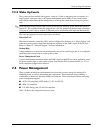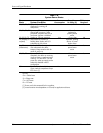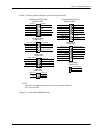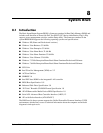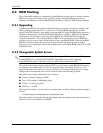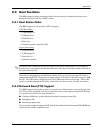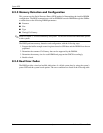
Technical Reference Guide www.hp.com 8-3
System BIOS
8.3 Boot Functions
The BIOS supports various functions related to the boot process, including those that occur
during the Power On Self-Test (POST) routine.
8.3.1 Boot Device Order
The BIOS supports two boot mode; UEFI and legacy:
UEFI Boot Order:
1. USB floppy/CD
2. USB hard drive
3. CD/DVD drive
4. Hard drive
5. Network interface controller (NIC)
Legacy Boot Order:
1. CD/DVD drive
2. USB floppy/CD
3. Hard drive (C:)
4. Network controller
✎
The above order assumes all devices are present in the initial configuration. If, for example, a
diskette drive is not initially installed but added later, then drive A would be added to the end of
the order (after the NIC).
The order can be changed in the ROM-based Setup utility (accessed by pressing F10 when so
prompted during POST). The options are displayed only if the device is attached, except for USB
devices. The USB option is displayed even if no USB storage devices are present. The hot IPL
option is available through the F9 utility, which allows the user to select a hot IPL boot device.
8.3.2 Network Boot (F12) Support
The BIOS supports booting the system to a network server. The function is accessed by pressing
the F12 key when prompted at the lower right hand corner of the display during POST. Booting
to a network server allows for such functions as:
■ Flashing a ROM on a system without a functional operating system (OS).
■ Installing an OS.
■ Installing an application.
These systems include an integrated NIC with Preboot Execution Environment (PXE) ROM and
can boot with a NetPC-compliant server.



